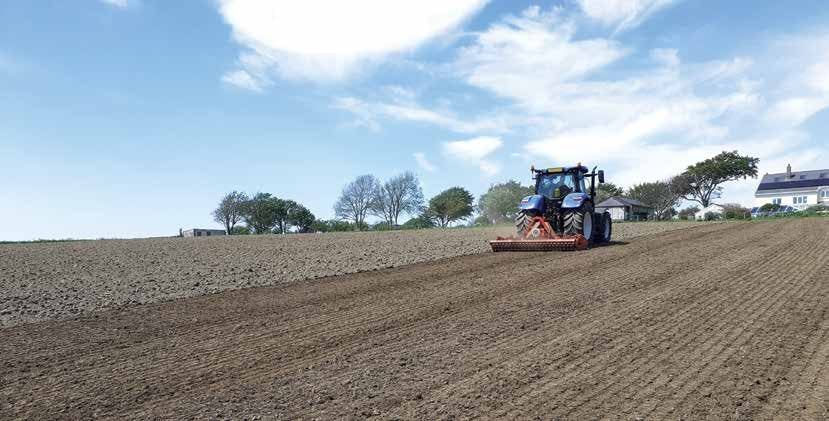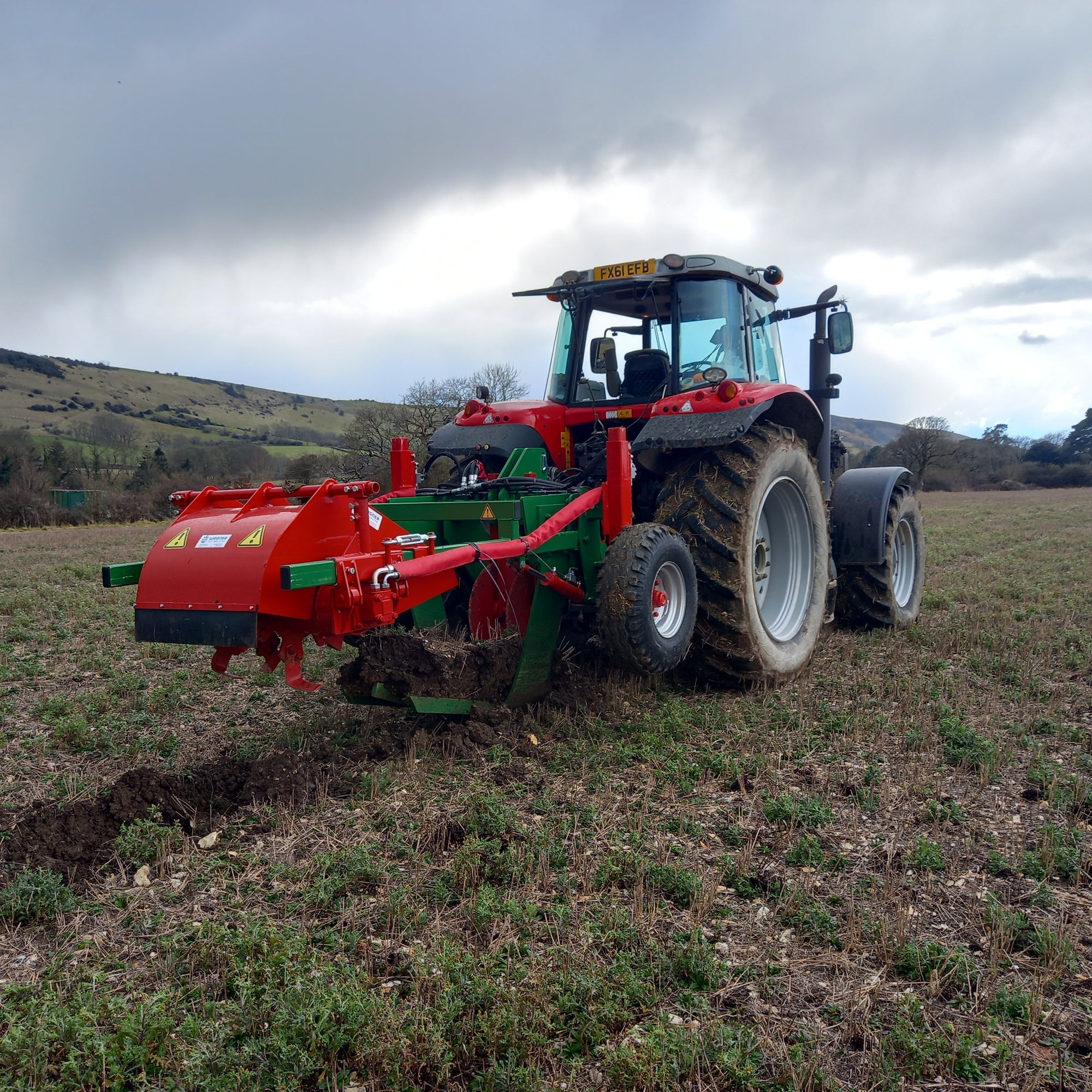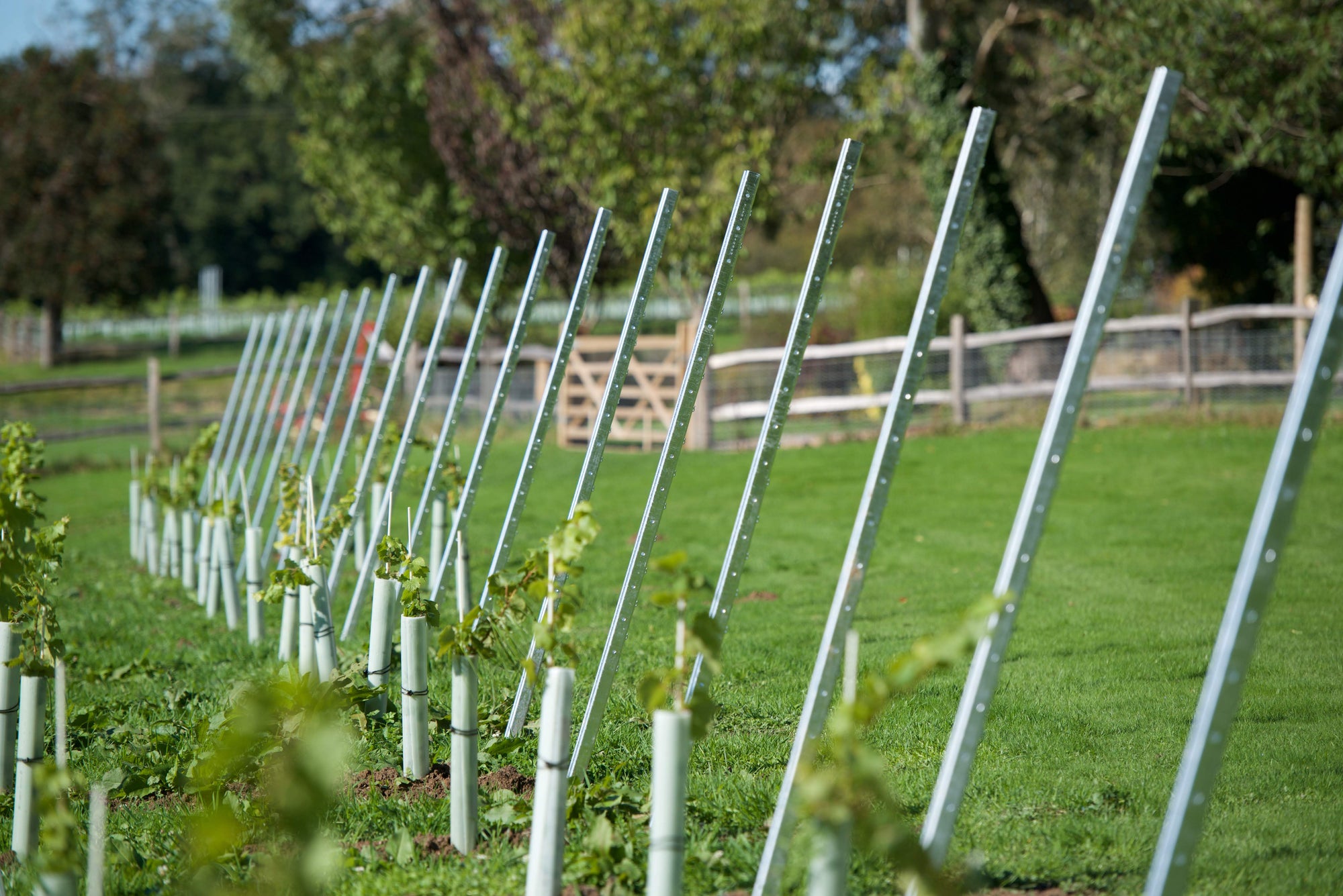

PROCESSES TO PREPARE GROUND FOR PLANTING
When we plant vines in May, the ground preparation often starts in the preceding year. When vines are planted, they need to have the best start possible to reduce the mortality rate at pruning and encourage as much growth as possible in their first season. The season to which a vine can start producing a meaningful crop can, in the most part, be attributed to the quality of ground preparation at planting.
The processes to prepare ground for vineyard planting go against most of the practices now discussed in regenerative farming. The cultivation goes much deeper than many other crops and fields are often left ploughed and open over winter. As VineWorks plant many farm diversification projects our ground preparation recommendations are sometimes met with resistance because of the ‘regen’ practices now widely used. We have explored other methods of planting which would be in the realms of ‘no till’, but for larger sites we currently prefer to work in the tried and tested way that guarantees the vines have the best start possible. Planting with the familiar GPS rigs is also the cheapest way to plant vines in straight lines.
When we plant in Kent and Sussex, where much of our work is, we use Agrifactors (Southern) Ltd, who operate out of Heathfield in East Sussex. Agrifactors, run by the formidable, but willing Chris Davis, are relied upon to see vineyard preparation projects through from start to finish. Agrifactors have big tractors and lots of kit which means they can tackle the difficult fields. Ulrich Hoffmann, of Hoffmann & Rathbone’s new Ford Farm Vineyard, planted a vineyard in 2021 on a beautiful, text book perfect site in East Sussex. A wet winter and several logistical challenges meant it was tough to get the field ready, but we got it done with Agrifactors. Now with a second season under its belt, Ulrich’s vineyard is looking fantastic.
For those of you planting in 2023, here are the key messages:
What to get right to prepare the field:
◆ Take soil analysis
◆ Use a good agronomist to make recommendations for nutrient additions
◆ Check pH
◆ Check organic matter levels
◆ Consider a cover crop if you have time
◆ Use a good ground works contractor who is reliable and has all the right equipment
Agrifactors to do list when getting to a clay site to prepare ground for vineyard planting:
◆ Spray with Roundup when grass and other cover is growing to get the best possible kill (other methods are available to reduce herbicide use from the start of the process)
◆ Top fields with flail mower, not too fast so that as much of the debris is mulched and goes through the machine several times
◆ Apply lime at the required amount to bring pH to 6.5
◆ Subsoil in three directions
◆ Apply compost, if required, at the maximum quantity allowed in RB209
◆ Plough, not too deep to bring up the clay but so that the plough runs on the top of the clay
◆ Cultivate the ploughed ground by tine or disc cultivator. Do not use a rotovator on heavy clays
◆ Apply micro nutrients and fertiliser
◆ Power harrow very lightly to incorporate nutrients
◆ If prepared before the winter sets in, drill a cover crop at 25kg/ha to help break up subsoil and produce a large amount of biomass
◆ Roll with ring rolls
Spring of planting year:
◆ The cover crop can be grazed off or mulched
◆ Cultivate with a tine or disc cultivator
◆ Apply lime, if required
◆ Apply compost, if required, to RB209
◆ Apply nutrients and fertiliser
◆ Lightly cultivate with a power harrow.



